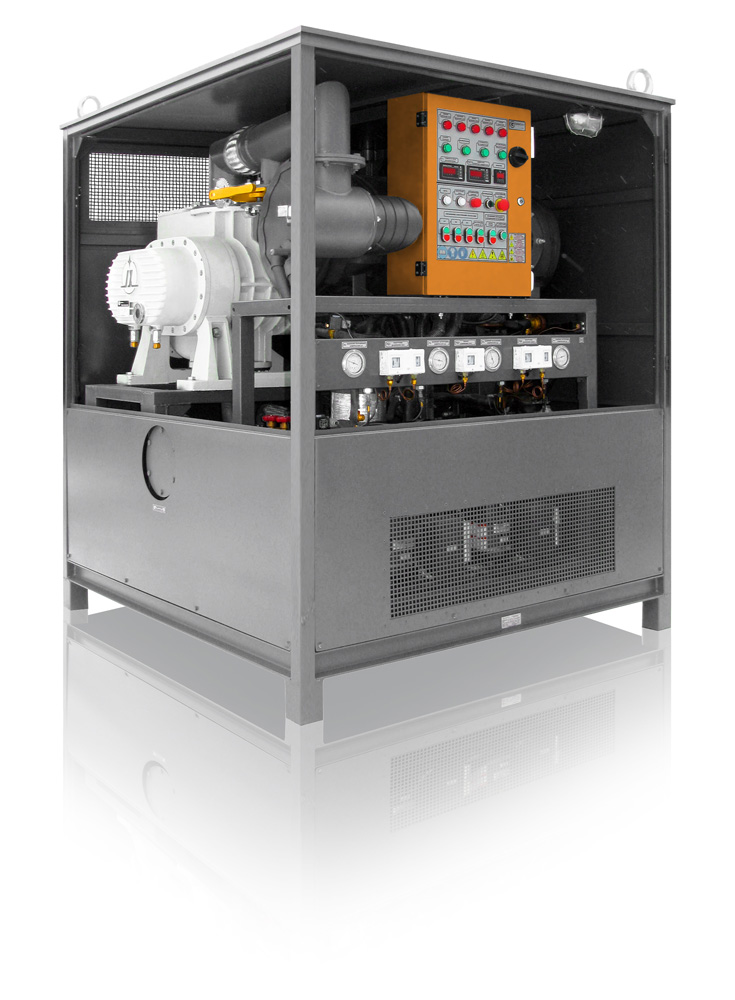The “Frost” Model by GlobeCore is designed for vacuuming and drying the solid insulation of electric power transformers from 110 to 1100 kW. This equipment is used for maintaining the efficient operations of transformers. In order to ensure the initial trouble free operation of your electric power transformers, the use of the “Frost” is necessary prior to placing the transformer into service.
The performance of electric power transformers will change during their service life due to the influence of temperature extremes and moisture. Acids, alkalis and other harmful chemicals clog the ventilation openings over time leading to deposits and worn parts and contaminated insulating oil. The influence of these elements, and many other micro and macro elements, will lead to numerous problems for your transformers that can cause frequent failures and downtime of the power unit
.
In this category of equipment, GlobeCore manufactures and distributes three (3) versions of the Frost model. The three models differ in terms of physical characteristics and design.
The first version is the “Single Block Frost” and is mounted in a single case. Among the primary components are: (1) an automated two-stage cooling unit with ability to cool to -70°C; (2) a ZeDzhey-600 vacuum pump; and (3) three fore-vacuums.
The second version of the GlobeCore “Frost,” is an upgraded two-unit system equipped with a JHL-150 pump, cooling and heating units, and two modules that are structurally different from the first version due to the lack of any fore-vacuum pumps.
The third version of the GlobeCore “Frost” also consists of two modules: The YX-70 and the BW-2000, each of which may be operated separately. The third version of the Frost differs from the previous two versions by having only one ZeDzhey-600 vacuum pump.
All Three models differ in performance. The main difference is in the original construction and modernization which leads to more efficient use of the equipment for a particular type and scale of industrial enterprise.
Drying the solid insulation is performed in the following way:
Once the “Frost” is connected to the electric power transformer via the vacuum cable DU150 mm, the operation of the two-stage refrigerator is started. Initially, the units are vacuumed using a fore-vacuum and vacuum pumps. This reduces the pressure in the tank to 400 Pa. Before connecting and starting the vacuum however, the “Frost” dials are set to the desired temperature down to as low as -70°C.
Due to the cooling of the evaporator in the low temperature trap down to -70°C, a difference in pressure occurs between the water vapor above the surface of the solid insulation in the transformer tank and the low temperature trap. (e.g., the pressure of saturated water vapor at a temperature of 20°C is equal to 2337 Pa and at a temperature of -40°C the pressure is only 18 Pa).
This difference in pressure is the driving force for drying the transformer’s solid insulation. Water vapor inside the tank of the transformer moves into a low temperature trap under the action of a pressure difference and is frozen on the evaporator. A decrease in water vapor pressure above the surface of the insulation causes the evaporation of moisture from the new solid insulation which also freezes on the evaporator in cold traps.
The drying time depends on the degree of moisture inside the transformer as well as with the moisture’s temperature, the ambient air temperature and the residual pressure inside the transformer tank.
The Two-Stage cooling unit operates automatically and requires no consumables other than electric power to perform all of its functions. Defrosting occurs automatically within an hour by feeding hot refrigerant to the evaporator.
The can unit is capable of continuous operation for more than 20 days. The volume of frozen moisture removed from the transformer within 24 hours is up to 7.5 liters.

